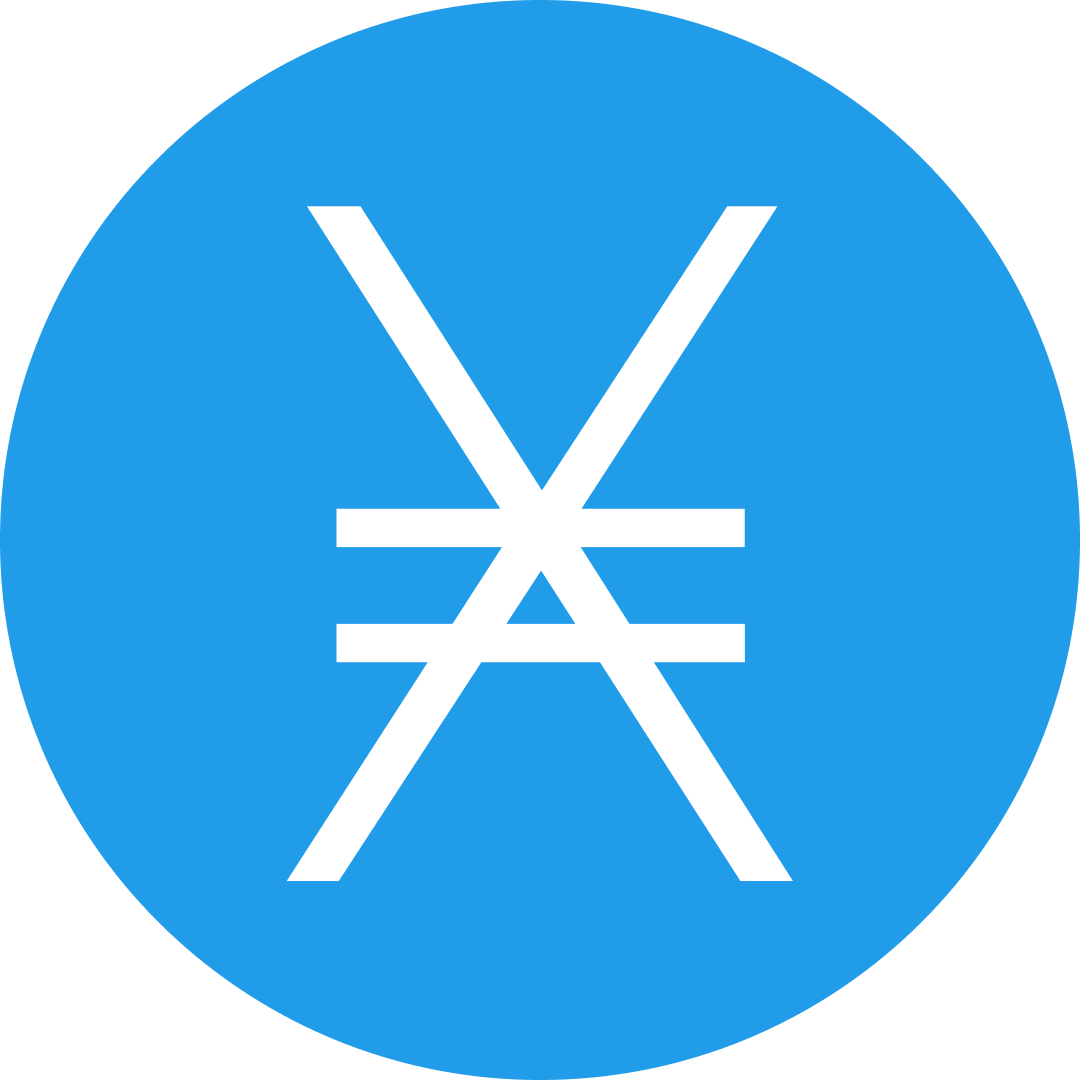-
 bitcoin
bitcoin $107015.826941 USD
-2.18% -
 ethereum
ethereum $3637.352324 USD
-5.18% -
 tether
tether $0.999831 USD
-0.02% -
 xrp
xrp $2.338078 USD
-6.23% -
 bnb
bnb $998.272150 USD
-6.97% -
 solana
solana $167.598257 USD
-10.12% -
 usd-coin
usd-coin $0.999863 USD
0.01% -
 tron
tron $0.282573 USD
-5.09% -
 dogecoin
dogecoin $0.169891 USD
-7.39% -
 cardano
cardano $0.557554 USD
-7.03% -
 hyperliquid
hyperliquid $39.914802 USD
-5.85% -
 chainlink
chainlink $15.414549 USD
-9.97% -
 bitcoin-cash
bitcoin-cash $510.361911 USD
-4.26% -
 ethena-usde
ethena-usde $0.999194 USD
-0.03% -
 stellar
stellar $0.282092 USD
-6.07%
How to set stop loss for SUPER buying and selling? Which strategies can effectively control risks?
Stop loss orders are vital for managing risk in crypto trading, especially for volatile assets like SUPER, helping to limit losses and protect investments.
May 21, 2025 at 01:57 am

Understanding Stop Loss in Cryptocurrency Trading
Stop loss orders are essential tools for managing risk in cryptocurrency trading, particularly when dealing with volatile assets like SUPER. A stop loss order is designed to limit an investor's loss on a position in a security. When the price of SUPER reaches a predetermined level, the stop loss order becomes a market order, automatically selling the asset to prevent further loss. Understanding how to effectively set stop losses can significantly enhance your trading strategy and protect your investments.
Setting Stop Loss for Buying SUPER
When you decide to buy SUPER, setting a stop loss order is crucial to manage potential downside risks. Here's how you can set a stop loss for buying SUPER:
- Determine Your Risk Tolerance: Before setting a stop loss, assess how much you are willing to lose on a single trade. This will help you decide the appropriate stop loss level.
- Choose the Right Price Level: Set your stop loss at a price level that, if reached, would indicate that your initial trading thesis was incorrect. For instance, if you bought SUPER at $10, you might set a stop loss at $9, representing a 10% loss.
- Place the Order: Use a trading platform that supports stop loss orders. Navigate to the order entry section, select 'Stop Loss,' input the price at which you want the order to trigger, and confirm the order.
Setting Stop Loss for Selling SUPER
If you are holding SUPER and looking to sell, setting a stop loss can help you lock in profits or minimize losses. Here's how to set a stop loss for selling SUPER:
- Evaluate Your Profit Goals: Determine the profit level at which you would be satisfied with selling SUPER. This will help you set a realistic stop loss.
- Set the Stop Loss Price: If you bought SUPER at $10 and it's now at $15, you might set a stop loss at $14 to protect some of your gains. This represents a 6.67% buffer from your current price.
- Execute the Order: On your trading platform, enter a stop loss order for selling SUPER at your chosen price level. Ensure the order is placed correctly and monitor it.
Strategies to Effectively Control Risks with Stop Losses
Implementing stop loss orders is just one part of a broader risk management strategy. Here are some strategies that can help you effectively control risks when trading SUPER:
- Trailing Stop Loss: A trailing stop loss moves with the price of SUPER, locking in profits as the price rises. For example, if you set a trailing stop loss at 10% below the current market price, it will adjust upward as the price of SUPER increases, but will trigger a sell order if the price drops by 10%.
- Percentage-Based Stop Loss: This strategy involves setting your stop loss at a fixed percentage below your entry price. For instance, setting a stop loss at 5% below your entry price can help you manage losses consistently across different trades.
- Technical Analysis-Based Stop Loss: Use technical indicators like support and resistance levels to set your stop loss. If you identify a strong support level for SUPER at $8, you might set your stop loss just below this level to avoid unnecessary triggering.
Combining Stop Loss with Other Risk Management Techniques
To maximize the effectiveness of stop loss orders, it's important to combine them with other risk management techniques:
- Position Sizing: Determine the size of your position based on your overall portfolio and risk tolerance. Smaller positions can reduce the impact of a stop loss being triggered.
- Diversification: Spread your investments across different cryptocurrencies to mitigate the risk associated with any single asset, including SUPER.
- Regular Monitoring and Adjustment: Continuously monitor the market and adjust your stop loss orders as needed. Market conditions can change rapidly, and what was once a suitable stop loss level may no longer be appropriate.
Common Mistakes to Avoid When Using Stop Losses
Even experienced traders can make mistakes when setting stop losses. Here are some common pitfalls to avoid:
- Setting Stop Losses Too Tight: If your stop loss is too close to the entry price, it may be triggered by normal market fluctuations, resulting in unnecessary losses.
- Ignoring Market Volatility: Failing to account for the volatility of SUPER can lead to stop losses being triggered prematurely. Always consider the asset's volatility when setting your stop loss.
- Over-Reliance on Stop Losses: While stop losses are valuable, they should not be your only risk management tool. Use them in conjunction with other strategies for a more robust approach.
Frequently Asked Questions
Q1: Can stop loss orders guarantee that I will sell at the exact price I set?A1: No, stop loss orders do not guarantee execution at the exact price you set. Once triggered, a stop loss order becomes a market order, which means it will be executed at the next available price. In highly volatile markets, this price can be significantly different from your stop loss level.
Q2: How often should I adjust my stop loss orders?A2: It depends on market conditions and your trading strategy. For long-term positions, you might adjust your stop loss less frequently, perhaps weekly or monthly. For short-term trades, daily adjustments might be necessary to reflect rapid price changes.
Q3: Can I use stop loss orders for all types of cryptocurrency trades?A3: Stop loss orders are generally available for most types of trades, but the availability can depend on the trading platform. Some platforms may not support stop loss orders for certain types of cryptocurrencies or during specific market conditions.
Q4: Are there any fees associated with stop loss orders?A4: Some trading platforms may charge fees for placing stop loss orders, especially if the order results in a trade. Always check your platform's fee structure to understand any potential costs associated with using stop loss orders.
Disclaimer:info@kdj.com
The information provided is not trading advice. kdj.com does not assume any responsibility for any investments made based on the information provided in this article. Cryptocurrencies are highly volatile and it is highly recommended that you invest with caution after thorough research!
If you believe that the content used on this website infringes your copyright, please contact us immediately (info@kdj.com) and we will delete it promptly.
- Bittensor's Wild Ride: TAO Token's Volatile Moves Explained
- 2025-11-05 05:20:02
- Decoding Crypto's Wild Ride: Insights on Bitcoin, XRP, and the Future of Digital Assets
- 2025-11-05 05:30:01
- ASTER Crash, Binance & Market Chaos: Decoding Crypto's Wild Ride
- 2025-11-05 05:30:02
- BNB Price Plunge: Crypto Sell-Off Deepens, What's Next?
- 2025-11-05 05:50:13
- Unlocking Crypto's Future: NIP Group's Bitcoin Bet, Altcoin Liquidity Boost, and the Rise of Little Pepe
- 2025-11-05 05:50:13
- Backend-for-Frontend, Token Theft, and Security: Navigating the Treacherous Waters of Modern Web Apps
- 2025-11-05 05:10:01
Related knowledge

Ethereum gas fees explained: how to save money on your transactions.
Nov 04,2025 at 04:01pm
Ethereum Gas Fees: Understanding the Basics1. Ethereum operates on a decentralized network where every transaction requires computational power to exe...

Kraken margin trading explained: a complete guide to leveraging your positions.
Nov 04,2025 at 02:19pm
Kraken Margin Trading Overview1. Kraken is one of the most established cryptocurrency exchanges offering margin trading to experienced traders seeking...

NFT flipping for beginners: a step-by-step guide to profitable trading.
Nov 02,2025 at 11:54pm
NFT Flipping Basics: Understanding the Market1. NFT flipping involves purchasing non-fungible tokens at a lower price and reselling them for profit, o...

DeFi yield farming guide: maximizing returns on PancakeSwap and Uniswap.
Nov 05,2025 at 12:20am
Understanding Yield Farming on PancakeSwap and Uniswap1. Yield farming has become a central activity in the decentralized finance (DeFi) space, allowi...

How to find the next 100x altcoin: a fundamental analysis checklist.
Nov 02,2025 at 09:54pm
Decentralized Exchanges Are Reshaping Trading Dynamics1. Decentralized exchanges (DEXs) have emerged as a powerful alternative to centralized platform...

Understanding crypto market cycles: when to buy, hold, and sell.
Nov 02,2025 at 11:19am
Decoding the Rhythm of Crypto Market Cycles1. The cryptocurrency market operates in recurring phases marked by predictable psychological and financial...

Ethereum gas fees explained: how to save money on your transactions.
Nov 04,2025 at 04:01pm
Ethereum Gas Fees: Understanding the Basics1. Ethereum operates on a decentralized network where every transaction requires computational power to exe...

Kraken margin trading explained: a complete guide to leveraging your positions.
Nov 04,2025 at 02:19pm
Kraken Margin Trading Overview1. Kraken is one of the most established cryptocurrency exchanges offering margin trading to experienced traders seeking...

NFT flipping for beginners: a step-by-step guide to profitable trading.
Nov 02,2025 at 11:54pm
NFT Flipping Basics: Understanding the Market1. NFT flipping involves purchasing non-fungible tokens at a lower price and reselling them for profit, o...

DeFi yield farming guide: maximizing returns on PancakeSwap and Uniswap.
Nov 05,2025 at 12:20am
Understanding Yield Farming on PancakeSwap and Uniswap1. Yield farming has become a central activity in the decentralized finance (DeFi) space, allowi...

How to find the next 100x altcoin: a fundamental analysis checklist.
Nov 02,2025 at 09:54pm
Decentralized Exchanges Are Reshaping Trading Dynamics1. Decentralized exchanges (DEXs) have emerged as a powerful alternative to centralized platform...

Understanding crypto market cycles: when to buy, hold, and sell.
Nov 02,2025 at 11:19am
Decoding the Rhythm of Crypto Market Cycles1. The cryptocurrency market operates in recurring phases marked by predictable psychological and financial...
See all articles










































































